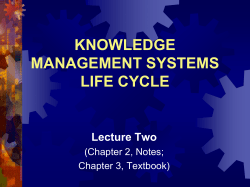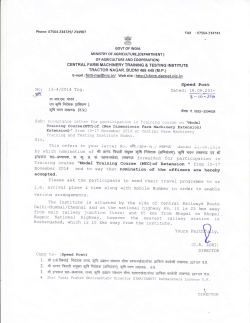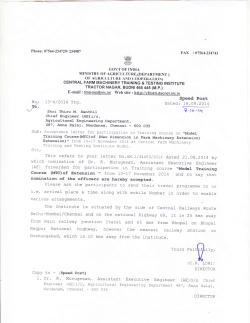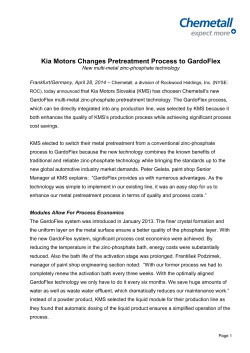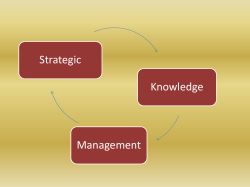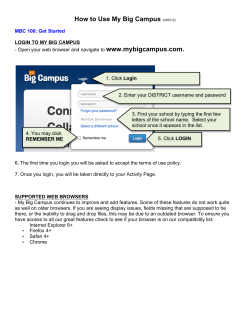
Knowledge Management: Overview by Mrs. Janet Scheitle
Knowledge Management: Overview by Mrs. Janet Scheitle What is Knowledge? The Old Pyramid data information knowledge wisdom Information that changes something or somebody— becoming grounds for action by making an individual, or institution capable of different, more effective action Drucker, The New Realities What is Knowledge Management? More definitions than Webster Wiig Drucker Rumizen Neilson My Take More varieties than Heinz 57 British Petroleum Buckman Labs Ford Others A few Foundation Principles and Building Concepts Knowledge Influences Success Knowledge Resides in the Heads of People Two Types of Knowledge Codified Personalized Knowledge Sharing Requires a Conduit to Happen Systemically Technology is the conduit Knowledge Sharing Requires Trust KM embraces both the Knowledge Based organization and the Learning Organization KM has planned architectural frameworks Knowledge Influences Success Peter Drucker (the one factor) Toffler (Survival in Knowledge Age is not who can read or write but who can learn and unlearn quicker) Nonaka (the cutting edge) Tom Peters (sum total of valueadded) Handy, Drucker (primary factor of productivity) Knowledge Originates and Resides in the Heads of People and the Two Types of Knowledge Explicit – knowledge that is codified, recorded, or actualized into some form outside of the head Books, periodicals, journals, maps, photographs, audiorecordings Webpages, websites, portals Tacit – Knowledge from experience and insight, not in a recorded form, but in our heads, intuition Intellectual capital Doesn’t mean much unless packaged in useful ways technology and global environment is redefining “useful ways” Technology Enables New Knowledge Behaviors Technology shapes how we live (radio, television, computer, biotechnology) Pushes KM, doesn’t drive it Facilitates flow of knowledge One look, one feel Easy access Easy dissemination (push-pull) Different storage (from paper to digits) Knowledge sharing and transfer requires trust Trust is hard to build in cyberspace Trust usually requires initial face-to-face Sharing must be open and reciprocal Based upon a commonality Time to do so Social identity in cyberspace Shift from Managing Stocks of Stuff to Managing Flows of Knowledge (Nielson) Librarians use to managing stuff Administrators use to managing stuff Books Magazines Cassettes Buildings and furniture, land People Money Automators use to Managing Stuff Computers Fiber optics Bandwidth KM Embraces the Learning Organization and the KBO Peter Senge, The Fifth Discipline Learning Styles (Visual, Auditory, Kinesthetic) Change Intervention Styles (Engineer, Teacher, Socializer, Commander) Adult Learning Theory (Experiential, Critical Reflection, Self-Directed) Share knowledge to learn quicker, relearn and “unlearn” faster What is a KBO? Knowledge Requires Capture, Organization, Access and Leverage OLD WAY Capture form is written, auditory or graphical representations Organization is via tables of content, indexes, classification systems used by publishers, libraries, etc Access when physical body goes to where the knowledge is located…a library, a company, a research laboratory, a school Tacit knowledge rarely tapped Leverage is a sum game NEW WAY Capture from is digits in cyberspace Organization via software programs designed upon engineering principles, mathematical equations, word associations in cyberspace 24/7/365 Access wherever the physical bodies link via computers Tacit knowledge tapped using many different technological tools Leverage is exponential, multiples upon multiples Knowledge Work Activities Ac q u i r e An a l yz e O r g a n i ze C o d i fy Co m m u n i c aUttei l i z e Re sult Knowledge Architectures: It Takes a Lot -- the Four Pillars KM KM is different from a KMS KM is whole ball of wax (people, technology, processes, learning, business) KMS is a knowledge management system that makes it happen KMS is comprised of four components Content management applications Expertise locator applications Collaboration Portal All tightly integrated KM Important Lessons Learned KM - beyond fad – a distinct management concept suggesting it’s prudent to manage the intellectual assets of an enterprise, to cultivate for advantage in the marketplace KM is complex, integrative with other disciplines Old skills and abilities don’t necessarily work in KM environment – must be redefined, polished, updated Principles and concepts are not new- what’s new is the merger with technology to do so and practical applications Librarians have many skills that apply to KM
© Copyright 2025
